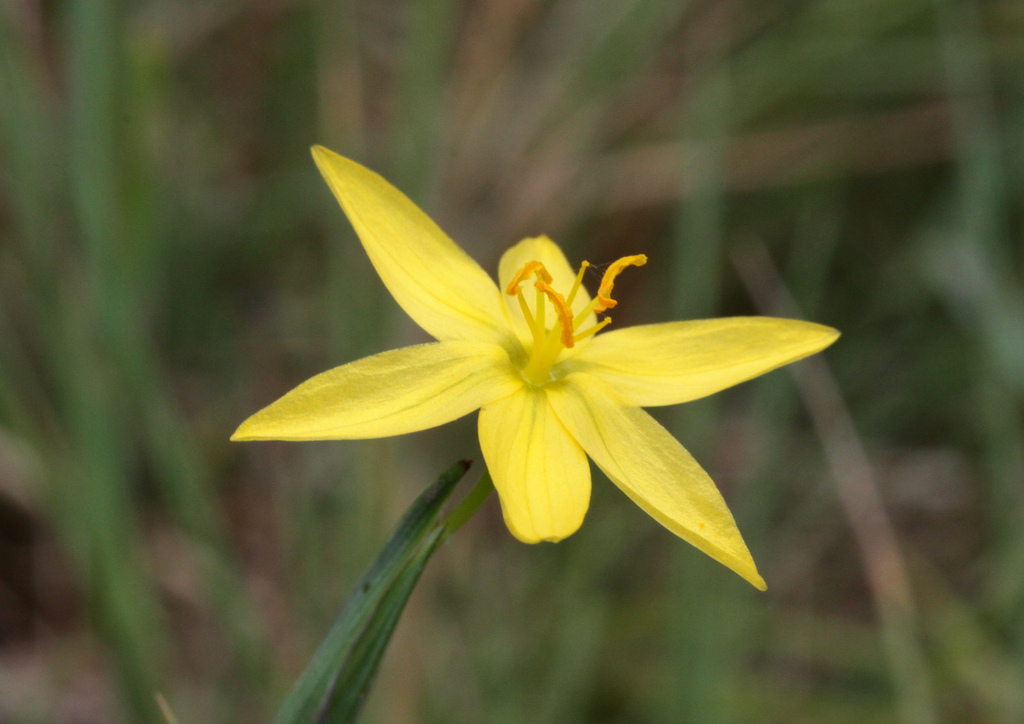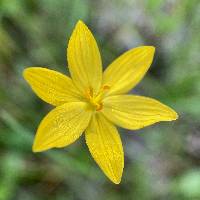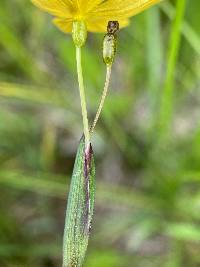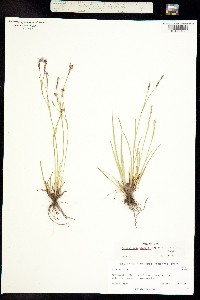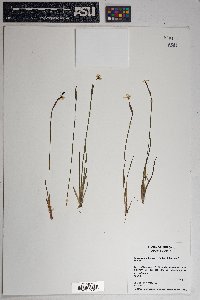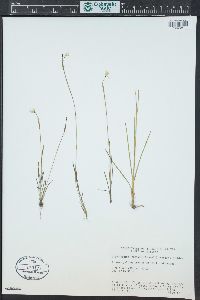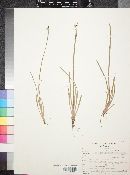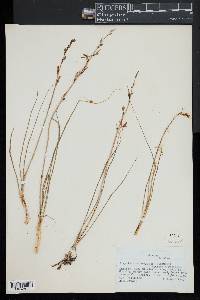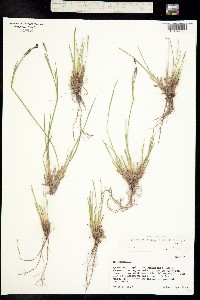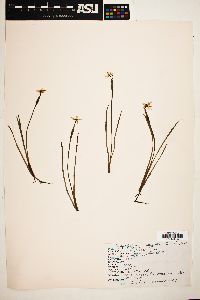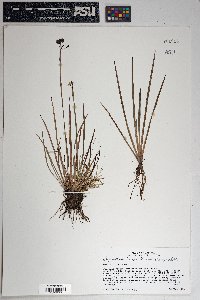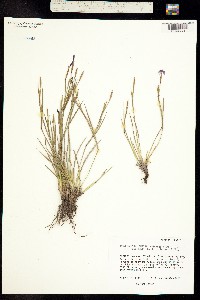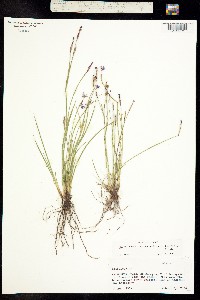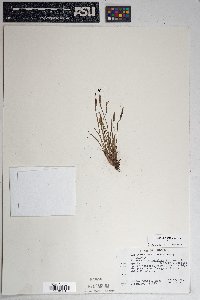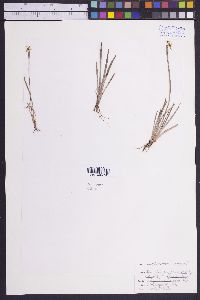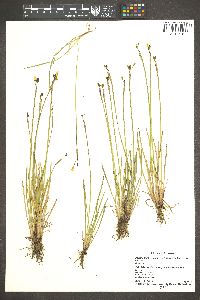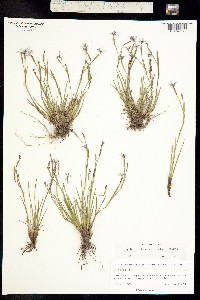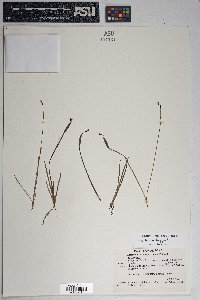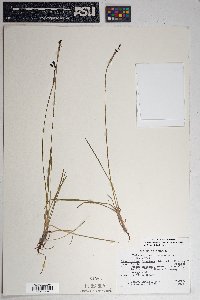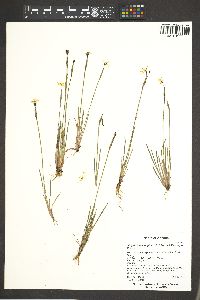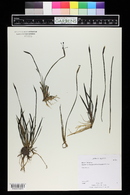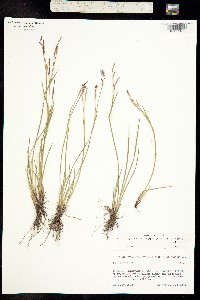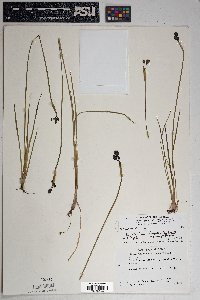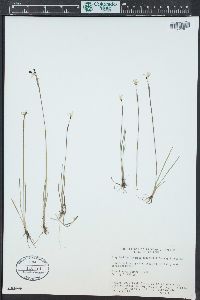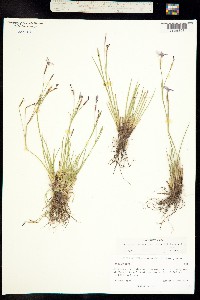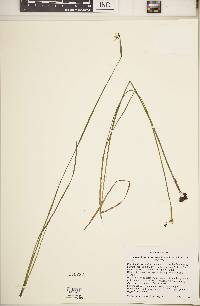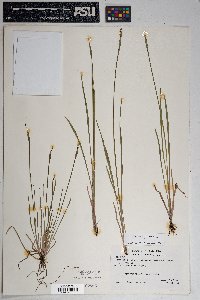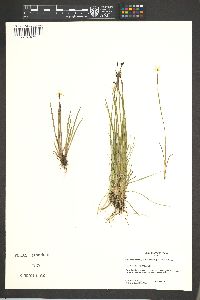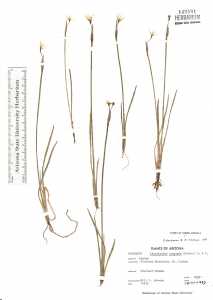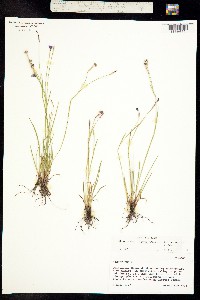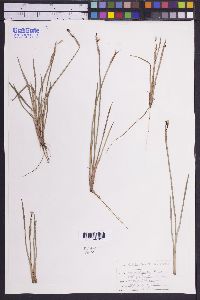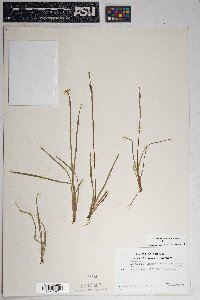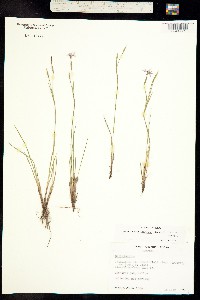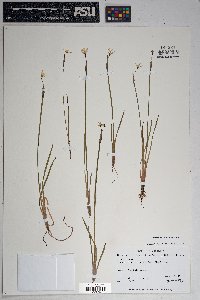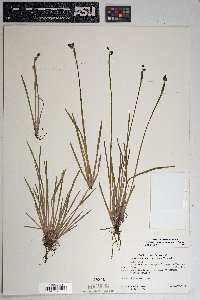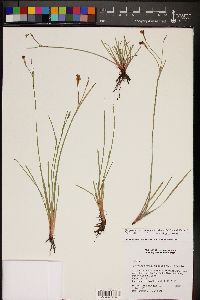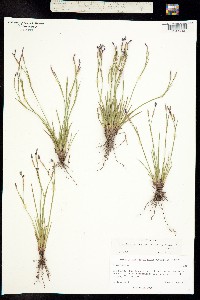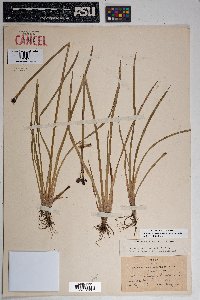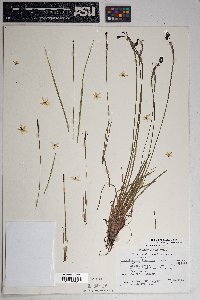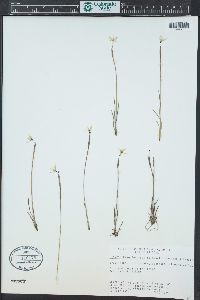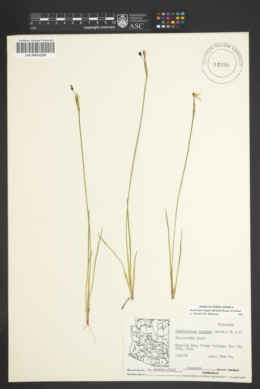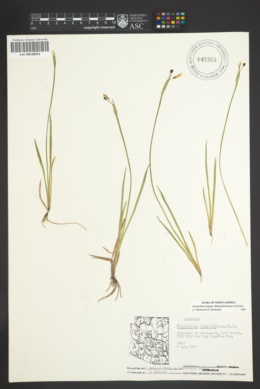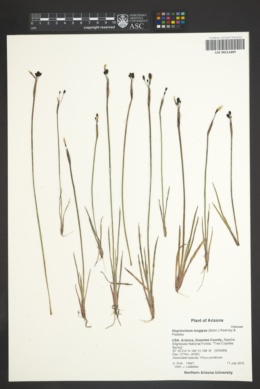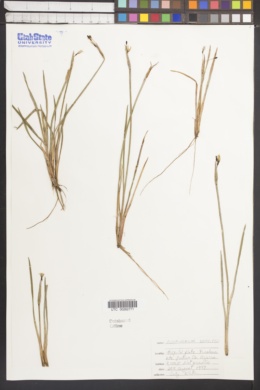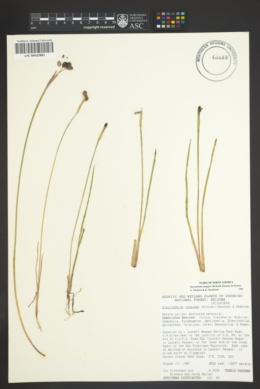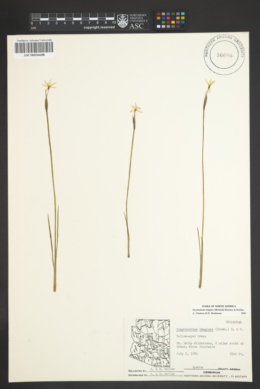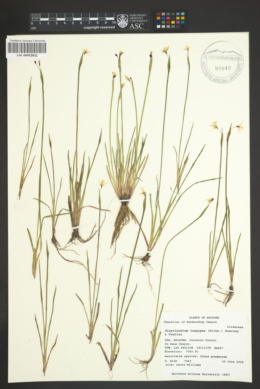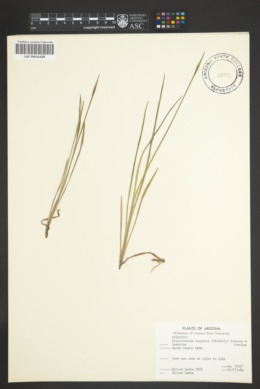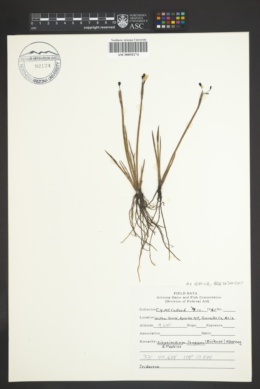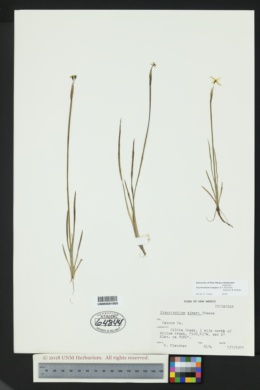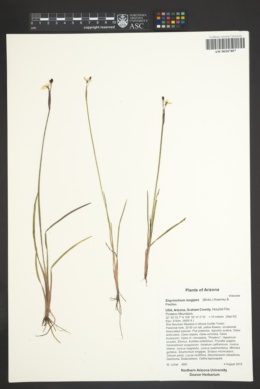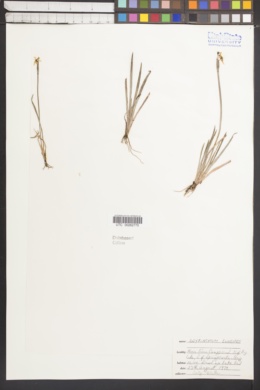
|
|
|
|
Family: Iridaceae
timberland blue-eyed grass, more...Timberland Blue-Eyed-Grass
|
Herbs, perennial, cespitose, green to medium olive when dry, to 4.6 dm, not glaucous. Stems simple, 0.6-1.7(-2.3) mm wide, glabrous, margins entire, similar in color and texture to stem body. Leaf blades glabrous, bases not persistent in fibrous tufts. Inflorescences borne singly; spathes green, glabrous, keels entire; outer 12.5-36 mm, 0-16 mm longer than inner, tapering evenly towards apex, margins basally connate 3.5-9 mm; inner with keel evenly curved to straight, hyaline margins 0.4-0.6 mm wide, apex usually extending as 2 rounded, sometimes erose lobes, ending 0-1.5 mm proximal to green apex. Flowers: tepals yellow to orange, usually with brownish or occasionally purplish veins; outer tepals 7-11 mm, apex acute to rounded; filaments connate basally, glabrous; ovary similar in color to foliage. Capsules dark brown to black, slightly turbinate to ± globose, 4.5-9 mm; pedicel ascending to erect. Seeds ± hemispherical, with slight depression on flattened side, 1-1.7 mm, rugulose. 2n = 34. Flowering summer. Wet to moist meadows, stream banks, moist open areas in forests; of conservation concern; 2200--3200 m; Ariz., Calif., N.Mex. Plants of Sisyrinchium longipes that are disjunct in the San Bernadino Mountains, California, were previously identified as S. elmeri.
Plant: perennial herb; erect, to 46 cm tall; ROOTS fibrous or moderately thickened; STEMS 0.6-3.5 mm wide, simple, the margins entire, the surface glabrous Leaves: folded lengthwise in iris-like fashion but somewhat flexuous, mostly basal and distichous, the margins slightly hyaline basally; 1.2-4.4 mm wide INFLORESCENCE: an umbel with 2 spathe bracts, the lower (outer) bract enclosing the other (inner); SPATHE BRACTS with the dorsal keels entire; outer bract 12.5-36(-50) mm long, tapering evenly to the apex, the margins connate basally (2.5-)3.5-9 mm; inner bract 11-26 mm long, the hyaline margins wide, ending just below or at the apex, the base curved or tapering evenly as it emerges from the outer bract Flowers: yellow to orange and generally with brownish veins; pedicels ascending, glabrous, at anthesis generally longer than the inner bract; tepals 8-12 mm long, the outer with acute non-apiculate apices; anthers 1.8-4.3 mm long; filaments united basally; ovary glabrous Fruit: FRUITS a capsule 4.5-9 mm long, obovoid to nearly spherical, dark brown to black; SEEDS 1.1-1.7 mm long, hemispherical with a slight depression on the flattened side, the surface reticulate Misc: Wet or moist meadows, streambanks, springs, or ephemeral pools in coniferous woods; 2100-3100 m (7000-10200 ft); Jun-Aug REFERENCES: Cholewa, Anita F. and Douglass M. Henderson. 1994. Iridaceae J. Ariz. - Nev. Acad. Sci. Volume 27(2), 215. Cholewa and Henderson 1993 Duration: Perennial Nativity: Native Lifeform: Forb/Herb General: Perennial with erect stems to 50 cm tall, the roots fibrous to moderately thickened, stems 0.5-3.5 mm wide, simple, margins entire and surface glabrous. Leaves: Equitant 1.2-4.5 mm wide, generally basal. Flowers: Spathe bracts with dorsal keels entire, outer bract 12.5-36 mm long, tapering evenly to apex, margins connate basally, 3.5-9 mm, inner bract 11-26 mm long, hyaline margins, ending just below apex; flowers yellow to orange with brownish veins, ascending to erect pedicels, tepals 8-12 mm long, outer with acute non-apiculate apices, filaments united basally, ovary glabrous. Fruits: Loculicidal capsule 4.5-9 mm long, obovoid to nearly spherical, dark brown to black. Ecology: Found in wet to moist meadows, along streams, at springs and seeps, and in other ephemeral waters from 7,000-12,000 ft (2134-3658 m); flowers June-August. Notes: Distinguished from S. demissum by the slender stems wider leaves and orange to yellow perianth, generally found at higher elevations, also has erect pedicels where the similar S. cernuum has recurved pedicels and generally larger floral parts than S. cernuum. Ethnobotany: Unknown Etymology: Sisyrinchium is from Greek sisyra for shaggy coat, because the corm tunics recall a shaggy coat, while longipes means long-stalked. Synonyms: None Editor: SBuckley, 2010 |
This project was made possible in part by the Institute of Museum and Library Services [MG-70-19-0057-19].
Powered by Symbiota

